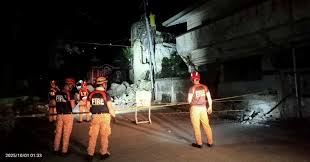Philippines Earthquake Today: What You Need to Know

Introduction
On October 20, 2023, a significant earthquake struck the Philippines, once again highlighting the region’s vulnerability to seismic events. Earthquakes are not uncommon in the Philippines, a country located along the Pacific Ring of Fire, but today’s tremor has raised concerns among citizens and authorities alike. Understanding the details surrounding this earth-shattering event is crucial for residents, tourists, and anyone connected to the area.
Details of the Earthquake
The earthquake occurred at approximately 10:15 AM local time, with a magnitude of 6.8 and its epicenter located near the northern coast of Mindanao, according to the Philippine Institute of Volcanology and Seismology (PHIVOLCS). The tremor was felt strongly in various regions including Davao City and Cagayan de Oro, prompting immediate reports of building evacuations and safety precautions.
Initial assessments suggest that while no major injuries have been reported in the immediate aftermath, some buildings have sustained minor structural damage. Emergency response teams are currently on high alert, conducting inspections and ensuring that affected individuals receive necessary support. Local government units have activated their disaster response plans, distributing resources to assist those in need.
Public Response and Safety Measures
As news of the earthquake spread, many residents took to social media to share their experiences and express their concerns. The National Disaster Risk Reduction and Management Council (NDRRMC) has urged the public to remain vigilant and prepared for aftershocks, which are common following major seismic activity. Authorities have recommended that individuals stay away from structures that may be at risk of collapse and prepare emergency kits with essential supplies.
In schools and businesses, emergency drills are being implemented to educate people on how to respond to earthquake situations effectively. Educational campaigns highlighting earthquake preparedness and response strategies have become a focal point, as many families are reminded of the importance of being prepared for future incidents.
Conclusion
The Philippines earthquake today serves as a critical reminder of the geological realities the country faces. While the immediate impacts appear manageable, the potential for aftershocks and future seismic events continues to be a concern. It is imperative for citizens to engage in preparedness initiatives and for authorities to maintain robust response systems. As the situation unfolds, the emphasis remains on safety, community support, and resilience in the face of natural disasters. Continued updates from geological agencies will provide vital information as the country navigates this latest challenge.
